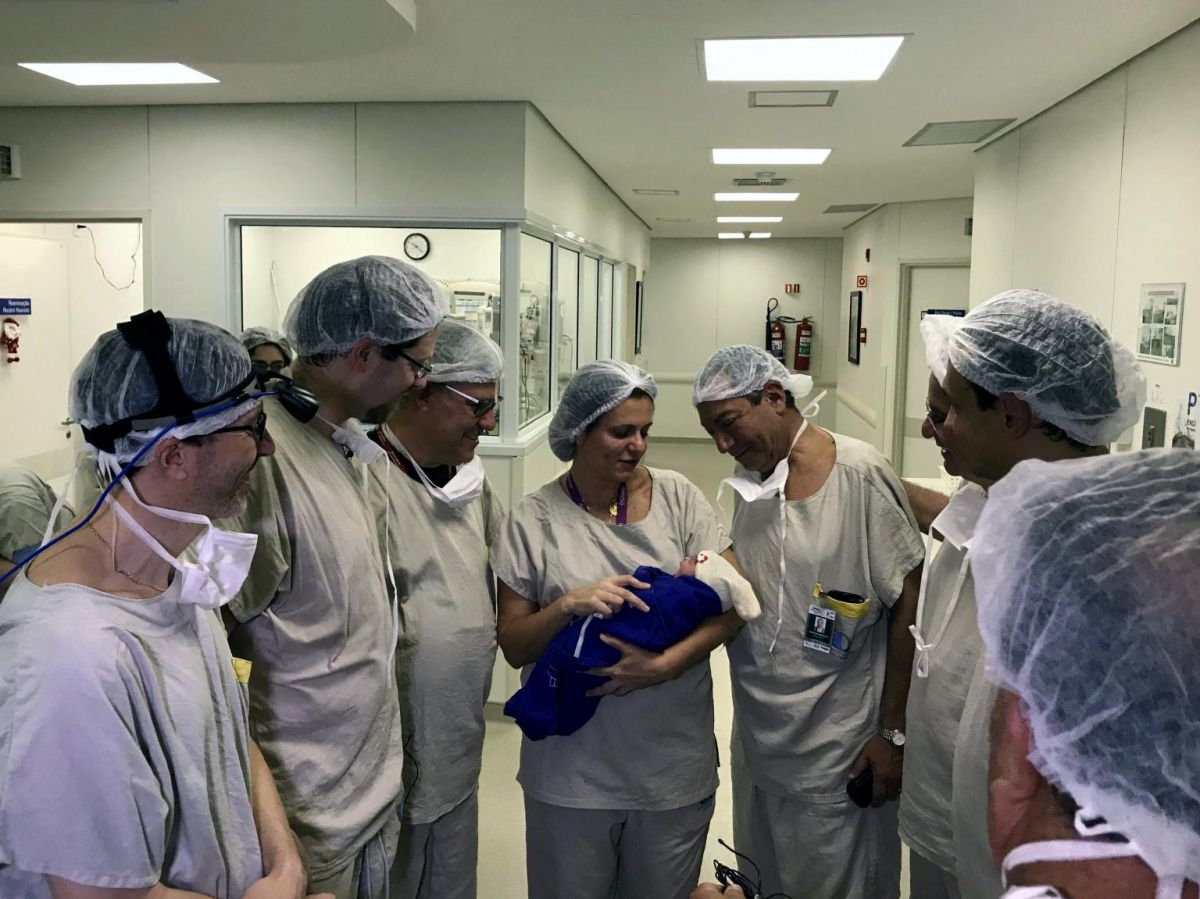Ten years already since the world's first uterine transplant carried out by the team of Dr. Mats Brannstrom (Gothenburg Hospital, Sweden) which resulted in a live birth after a decade of animal experimentation.
Fewer than 100 children born from uterine transplants
According to the first assessment of this unusual practice, just presented by the University of Dallas (Texas) in an American work published in the journal Jama, More than a hundred uterine transplants have been performed worldwide to date.
This study, Dallas Uterus Transplant Study (DUETS), conducted on about twenty American cases and designed to evaluate the long-term results of uterus transplantation and assess its safety, notes that there is no worldwide registry reporting precisely the number of births resulting from this procedure.
Their authors, however, estimate that around 70 living children have been born from this practice, including three in France, all of these births made possible thanks to the work carried out using living donors by Professor Jean-Marc Ayoubi's team (Foch Hospital, Suresnes).
Read alsoGrafting: better preserving grafts, a necessary adaptation
One in 4,500 women is born without a uterus
As a reminder, so-called absolute uterine infertility can be acquired or congenital and due to a dysfunctional or absent uterus. Uterine transplantation, from living or deceased donors depending on the protocols, is now offered in particular to women born without a uterus, affected by Mayer-Rokitansky-Kuster-Hauser syndrome, which affects one in 4,500 women in France.
According to the DUETS study, this alternative to adoption or surrogacy (GPA, banned in France but authorized in other countries), has a very good success rate (100%) and allows for the birth of healthy children, but the procedure is nevertheless not without surgical complications, both for the recipient mothers and their donors.
Read alsoRevolutionary: embryos developed in the laboratory, without gametes or uterus
What complications are there for donors and recipients?
Based on the results obtained from 18 living donors and 2 deceased donors, at least one complication was observed in eleven of the 20 recipients, i.e. maternal and obstetric complications in 50 % of successful pregnancies, such as hypertension during pregnancy, functional insufficiency of the cervix or its early dilation outside of labor, or even premature births. Furthermore, as the authors point out, the long-term impact of immunosuppressive treatment also remains unknown.
On the donor side, 4 of the 18 women presented grade 3 (severe) complications mainly related to the surgical procedure at the time of removal of the uterus by laparotomy in connection with the robotic-assisted procedure, complications fortunately without sequelae at the end of the 4 years of follow-up.
The benefits of post-mortem donation
In France, other work is underway. This is being carried out by Professor Vincent Lavoue's team (Rennes University Hospital), which obtained funding at the end of 2021 to perform 16 new transplants, including eight from living donors and eight others from deceased donors. The advantages of donation post mortem are obviously numerous: simplicity, speed of action (less than twenty minutes of intervention instead of several hours) and obviously total absence of risk for the donor.
Read alsoFirst birth of a baby after a uterus transplant from a deceased donor
Another definite advantage: the total anonymity of the donation, guaranteed by law in France. But as pointed out a report from the Academy of Medicine published in 2015, it remains difficult to anticipate the reaction of children when they learn that they came into the world thanks to that of their grandmother, a friend of their mother or even a uterus taken from a deceased woman. In any case, itas the French pioneer, Professor Jean-Marc Ayoubi, wrote in a Study published in 2021,If uterine transplantation were to become a standard of care, it could potentially be used by 150,000 patients in Europe.

